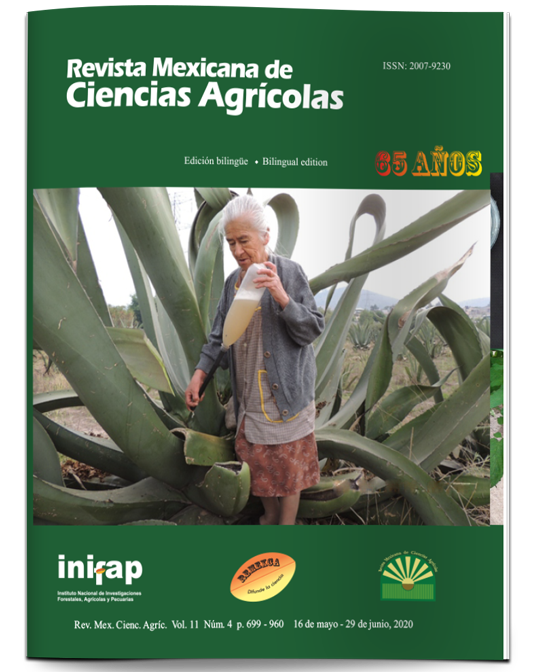Potential for organic carbon sequestration in quinoa simulated with the RothC-26.3 model
DOI:
https://doi.org/10.29312/remexca.v11i4.1787Keywords:
edaphic carbon, exchange rate, farming systems, vegetable wasteAbstract
The present study was carried out in the INIFAP Experimental Field of Mexico Valley with the objective of estimating the potential sequestration of organic carbon from the soil (COS) in the quinoa varieties: Amarilla Maranganí and Blanca with the use of the RothC-26.3 model. The simulations of COS dynamics with the RothC included: three time periods: 20, 60 and 100 years, the annual systems: monoculture of quinoa (MQ), monoculture of corn (MM) and rotation of quinoa-corn (RQM); and the use of three contributions of carbon (C) to the soil from crop residues (RV): 60, 70 and 80% of total dry matter (MST). Considering that about 80% of the MST remains on the cultivation land after the quinoa harvest, the carbon accumulation (C) was evaluated by plant structure in three fertilization treatments. Fertilization had no significant effect on MST production, attributed to the favorable level of soil fertility at the study site and the hardiness of the crop. The MST Amarilla Maranganí was higher than Blanca. In both quinoas, the stems and inflorescences and the leaves and grain represented 76 to 84% and 11 to 23% of the MST, respectively. The changes in COS simulated by the RothC in both quinoa varieties indicated COS sequestration potential (Mg C ha-1 year-1) in a period of time greater than 20 years, only in the MQ system with RV= 80% MST.
Downloads
Published
How to Cite
Issue
Section
License
Copyright (c) 2020 Revista Mexicana de Ciencias Agrícolas

This work is licensed under a Creative Commons Attribution-NonCommercial 4.0 International License.
The authors who publish in Revista Mexicana de Ciencias Agrícolas accept the following conditions:
In accordance with copyright laws, Revista Mexicana de Ciencias Agrícolas recognizes and respects the authors’ moral right and ownership of property rights which will be transferred to the journal for dissemination in open access. Invariably, all the authors have to sign a letter of transfer of property rights and of originality of the article to Instituto Nacional de Investigaciones Forestales, Agrícolas y Pecuarias (INIFAP) [National Institute of Forestry, Agricultural and Livestock Research]. The author(s) must pay a fee for the reception of articles before proceeding to editorial review.
All the texts published by Revista Mexicana de Ciencias Agrícolas —with no exception— are distributed under a Creative Commons License Attribution-NonCommercial 4.0 International (CC BY-NC 4.0), which allows third parties to use the publication as long as the work’s authorship and its first publication in this journal are mentioned.
The author(s) can enter into independent and additional contractual agreements for the nonexclusive distribution of the version of the article published in Revista Mexicana de Ciencias Agrícolas (for example include it into an institutional repository or publish it in a book) as long as it is clearly and explicitly indicated that the work was published for the first time in Revista Mexicana de Ciencias Agrícolas.
For all the above, the authors shall send the Letter-transfer of Property Rights for the first publication duly filled in and signed by the author(s). This form must be sent as a PDF file to: revista_atm@yahoo.com.mx; cienciasagricola@inifap.gob.mx; remexca2017@gmail.
This work is licensed under a Creative Commons Attribution-Noncommercial 4.0 International license.



